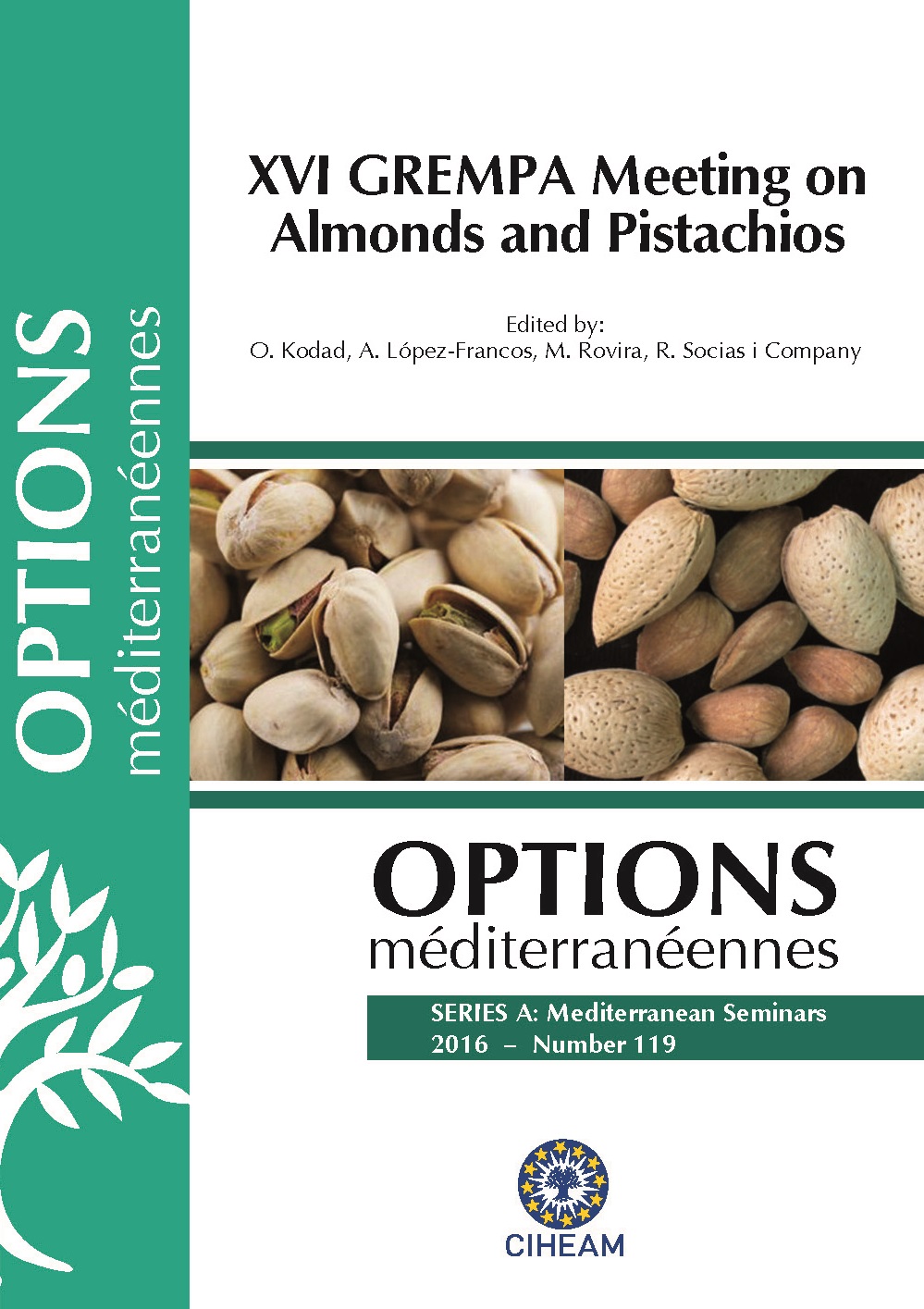| Article précédent | p. 69-72 | Article suivant |
Fine-mapping of the bitterness locus in almond
During domestication, almond kernels have been selected for low content of amygdalin, a cyanogenic glucoside responsible for bitterness. The taste of the almond kernel is under monogenic control, with the dominant sweet kernel (Sk) allele associated to sweetness and the recessive sk allele associated to bitterness. Since most of the cultivated almonds are heterozygous, new bitter almond seedlings are usually obtained during breeding programs and it is valuable to develop molecular markers enabling assisted selection. Although its biochemical function remains unidentified, the SK gene has been localised on linkage group five (G5) in the almond genetic linkage map obtained from the cross between the two heterozygous genotypes ‘R1000’ and ‘Desmayo Largueta’ (RxD). We report here the identification of several SNPs over a 3.7 Mb peach (Prunus persica L.) physical region, which is synthenic to the one containing the Sk locus in almond. Some of them were converted into cleaved amplified polymorphic DNA (CAPS) markers suitable for assisted selection. Further studies are in progress aiming to the functional characterization of candidate genes for controlling the phenotype.
Au cours de la domestication, les amandes ont été sélectionnées pour une faible teneur en amygdaline, un glucoside cyanogène responsable de l’amertume. Le goût de l’amande est sous un contrôle monogénique, avec l’allèle dominant (Sk) associé à la douceur du noyau et l’allèle récessif de (sk) associée à l’amertume. Comme la plupart des amandes cultivées sont hétérozygotes, de nouveaux plants d’amandes amères sont habituellement obtenus au cours des programmes de sélection et il est utile de développer des marqueurs moléculaires permettant la sélection assistée. Bien que sa fonction biochimique reste non identifiée, le gène SK a été localisé sur le groupe de liaison cinq (G5) dans la carte d’amande obtenue à partir d’un croisement entre les deux génotypes hétérozygotes ‘R1000’ et ‘Desmayo Largueta’ (RxD). Nous rapportons ici l’identification de plusieurs SNP plus de 3,7 Mb de pêche (Prunus persica L.) de région physique, qui est synthenic à celui contenant le locus Sk en amande. Certains d’entre eux ont été convertis en (CAPS) (cleaved amplified polymorphic DNA) marqueurs appropriés pour la sélection assistée. Des études supplémentaires sont en cours visant à la caractérisation fonctionnelle des gènes candidats pour commander le phénotype.
- [ Afficher ]
- [ Télécharger ]
- [ Exporter la citation ]
Vous pouvez télécharger la citation au format :
- [ Imprimer ]
-
Mots-clés
AMERTUME, AMYGDALINE, CARTOGRAPHIE DES GENES, PRUNUS AMYGDALUSCiter cet article
Ricciardi F., del Cueto J., Lotti C., Pavan S., Ricciardi L., Dhingra A., Dicenta F., Moller B.L., Sánchez-Pérez R. Fine-mapping of the bitterness locus in almond. In : Kodad O. (ed.), López-Francos A. (ed.), Rovira M. (ed.), Socias i Company R. (ed.). XVI GREMPA Meeting on Almonds and Pistachios. Zaragoza : CIHEAM, 2016. p. 69-72. (Options Méditerranéennes : Série A. Séminaires Méditerranéens; n. 119). 16. Meeting of GREMPA (Groupe de Recherches Méditerranéennes pour l\'Amandier et Pistachier / Mediterranean Research Group for Almond and Pistachio), 2015/05/12-14, Meknes (Morocco) . http://om.ciheam.org/om/pdf/a119/00007366.pdf



